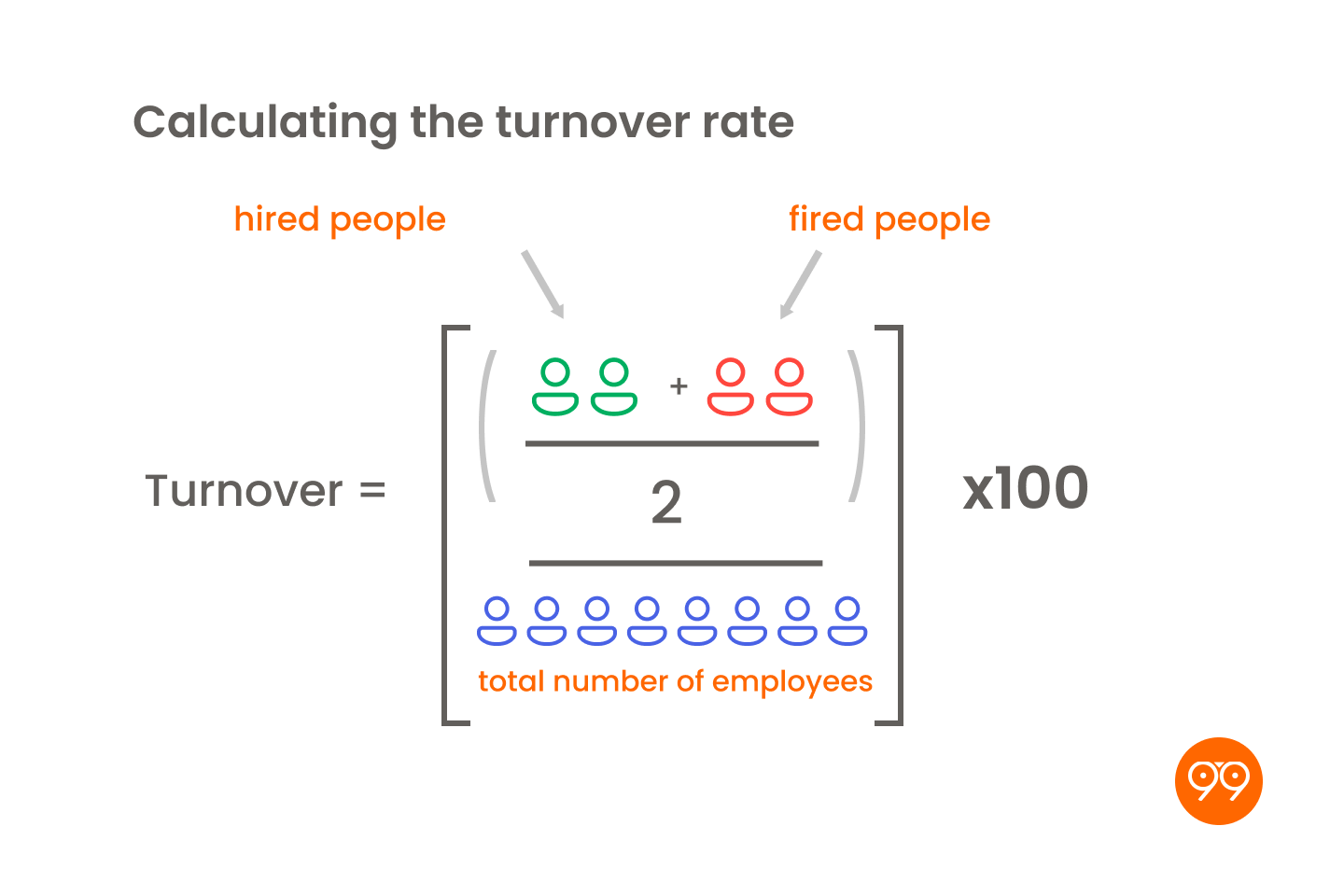Turnover: causes, consequences and how to prevent it
This phenomenon was felt before in the technology market, where qualified professionals with proficiency in other languages became the target of companies that pay in dollars and euros. But now, after having gone through the most challenging moments of the pandemic, and with the lessening of the climate of insecurity that existed, the tendency is for turnover rates to increase and involve different professional segments. And as much as the increase in these rates is a global phenomenon, here in Brazil the impacts can be more profound, precisely due to the weakening of our currency and economy in relation to the main players in the world market.
What is turnover?
Turnover is the calculation of the turnover of people working in a company, it is used to measure the movement of professionals in and out of an organization. It is very common to hear that turnover is a key indicator for HR, which is true, but it is important to reinforce the relevance of this index for the entire company.
All organizations have a turnover rate, and this renewal is natural in the life cycle of companies. However, if this index is too high, it could mean that something is not right.

How to calculate turnover?
There are different calculations for different scenarios, such as small or fast-growing companies. Here we will show how to calculate the simple turnover index. You can do this calculation for any period, however, the most common are monthly, quarterly and yearly.
The simple turnover index is calculated as follows:

To calculate the turnover, it is necessary to add the number of people hired to the number of people laid off and divide by two. The resulting value is divided by the total number of employees and then multiplied by one hundred.
Why is a high turnover rate harmful to the company?
Financially, it has a high cost for companies. In addition to the expense of dismissal, there is the cost of a selection process to replace this vacancy. There can also be a cost of training and onboarding, and a drop in productivity until the new person is ready.
A high turnover rate can have a negative effect on the company's image in the market, in addition to demotivating people who remain on the team.
What are the main causes?
Conflicts with management
If some of the company's leaders have a higher turnover rate than their other peers, it may be that this person does not manage the team well or that the relationship between them and the rest of the employees is very fragile.
Toxic organizational culture
When people do not identify with and embrace the company's culture, values, and dynamics, they are more likely to turn their attention to the market in search of new opportunities.
Salaries below market average
If most people who leave the company do so due to salary, it may be that your company is really paying below the market and it is necessary to re-evaluate your compensation and benefits policy.
Lack of Recognition
Professionals want to advance in their careers and conquer higher positions, and when they feel that their work is not being valued, they can seek new horizons.
Failures in the recruitment and selection process
A high turnover rate can be a consequence of failures during the selection process. Hiring a person who is not aligned with the company's values and culture will cause frustration for both sides. Having an unqualified database or neglecting some step in the process can also contribute to wrong hiring.
Unattainable goals
Bonuses or variable remuneration linked to the achievement of goals are undoubtedly a great incentive for professionals and a great way to increase team productivity. However, when goals are very difficult, or even impossible to achieve, bonuses have the opposite effect, demotivating the team.

How to reduce turnover?
The first step must be an accurate diagnosis of the causes that lead to a high turnover rate, and they can be very varied and difficult to identify, or they can be recurrent and easy to identify. Below are some actions that can help reduce this index.
Have a career plan
The lack of growth prospects in the company has a direct impact on people's satisfaction and motivation. Therefore, presenting the goals and paths for professional growth in the organization, and putting this planning into practice is a great tool to engage and encourage professionals.
Investir em treinamentos
Investing in training is beneficial for professionals, who feel valued and motivated when acquiring new knowledge, and for the company, as it trains its team, bringing a return in productivity and quality of services provided.
Build an inclusive and humanized environment
Quality of life has been an issue highly valued by people. Providing flexible hours, hybrid working hours, work activities, get-togethers, and, above all, encouraging empathy, help to keep the work environment healthier and conducive to friendly relationships. Having a diverse team also has a positive impact on the way the company is perceived by employees. Therefore, investing in an inclusive environment makes people value working at the company, feel much more secure and motivated, and perceive themselves as part of the team.
Invest in R&S
When there is planning in the selection process based on the culture, values, and mission of the organization, the chances of turnover decrease greatly. If there are flaws in the selection stages, you can hire a person who does not have the cultural fit or profile compatible with what was sought. Hiring the right people for open positions in an organization is crucial to achieving a low turnover rate.
Making partnerships for recruitment and selection can be the best solution to reduce your turnover. Schedule a chat with one of our experts right now and learn how 99Hunters can help you in your recruitment challenges, with the reach of the largest network of headhunters in Latin America.
Share this
You May Also Like
These Related Stories

Toxic Organizational Culture

Recruiter x Headhunter: differences and advantages

No Comments Yet
Let us know what you think